
by Krista | Sep 7, 2010 | Gulliver Tuesday
I’ve been infatuated with Germany since I was a little girl listening wide-eyed to Dad reading us stories of courage and sacrifice from World War II. I was horrified by the Nazi’s but deeply impacted and inspired by those brave few who resisted their own government, risking their lives and fortunes to protect those the Nazi’s wished to destroy.
I became a German history buff, scouring library bookshelves for biographies, histories, and novels that would bring this country to life for me.
I shivered as I learned of the fearsome, wild Germanic tribes from the old days. One sight of those chaps would’ve terrified me! I looked with interest at the strange little helmets of Otto von Bismarck and his military leaders, and read with fascination the tales of escape and evasion from East Germany to West after the Berlin Wall was raised.
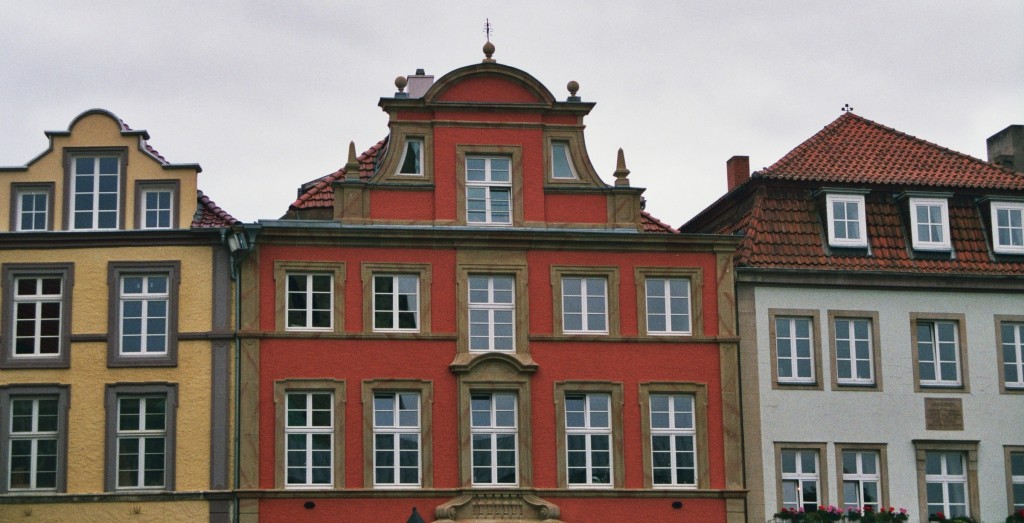
Although I read voraciously, it wasn’t until my first visit to Germany that I transitioned from fascination to love of this amazing country.
Its beauty is undeniable. Even on dark, cold, rainy days, the tidy villages, expansive fields and dense forests always delight me. I never tire of wandering the streets of Germany, whether it be the city pavements of Berlin and Munich, or the cobbled squares of small towns, there is much scope for the imagination.
Yet my favorite aspect of Germany is not the history, or the architecture, or even the food. It’s the people.
I had heard stories of the coldness, rudeness and arrogance of the Germans, and while I suppose there are some like that, I haven’t encountered many. The Germans I know are fantastic people, warm-hearted, hilarious, and some of the best cooks I have ever met.
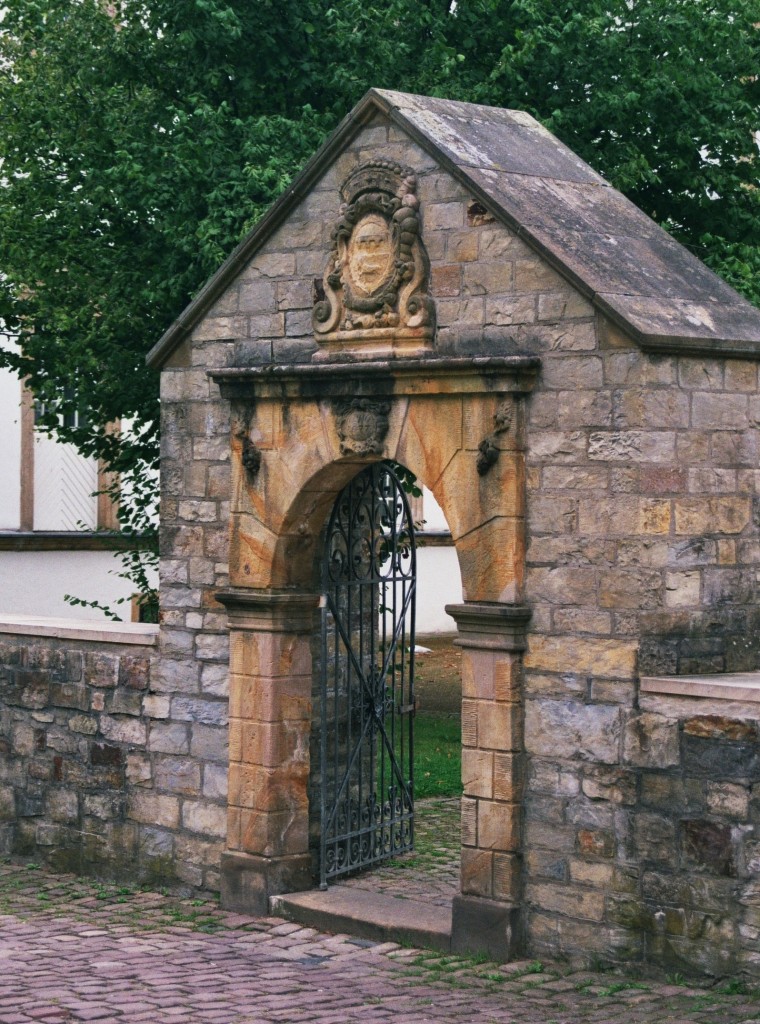
Like my friend Rita. The two of us met while we were nannies in Portugal, and have been like sisters ever since. Her parents are my adopted parents and vice-versa. I got to be at her wedding and I can’t wait to visit her again so I can meet her scrumptious baby girl. 🙂 Their family history still grips my heart. Whenever I start to feel sorry for myself all I have to do is think of what they’ve gone through, what they’ve survived, and I am filled with gratitude and renewed courage to press on.
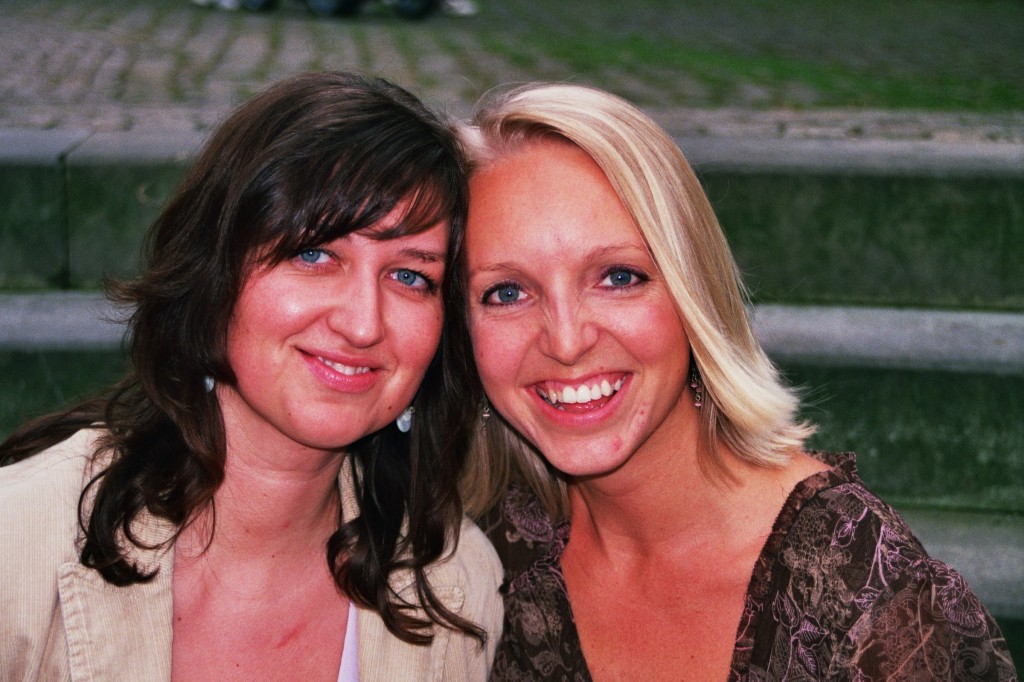
I learned to cook real German/Russian food from Rita and her Mom – boy can those girls cook!! – and I can’t wait to share some of those recipes with you in the months to come.
In the meantime here is an easy recipe that never fails to make me think of Germany.
Simply fill your crockpot with layers of sauerkraut, thinly sliced onions, sausages of your choice, celery seed and lavish amounts of pepper, cover and cook for 4-5 hours. Twenty minutes before you’re ready to serve, boil up some potatoes. Once drained, drizzle them with melted butter, sprinkle with parsley and serve alongside the sausages with a bit of grainy mustard.
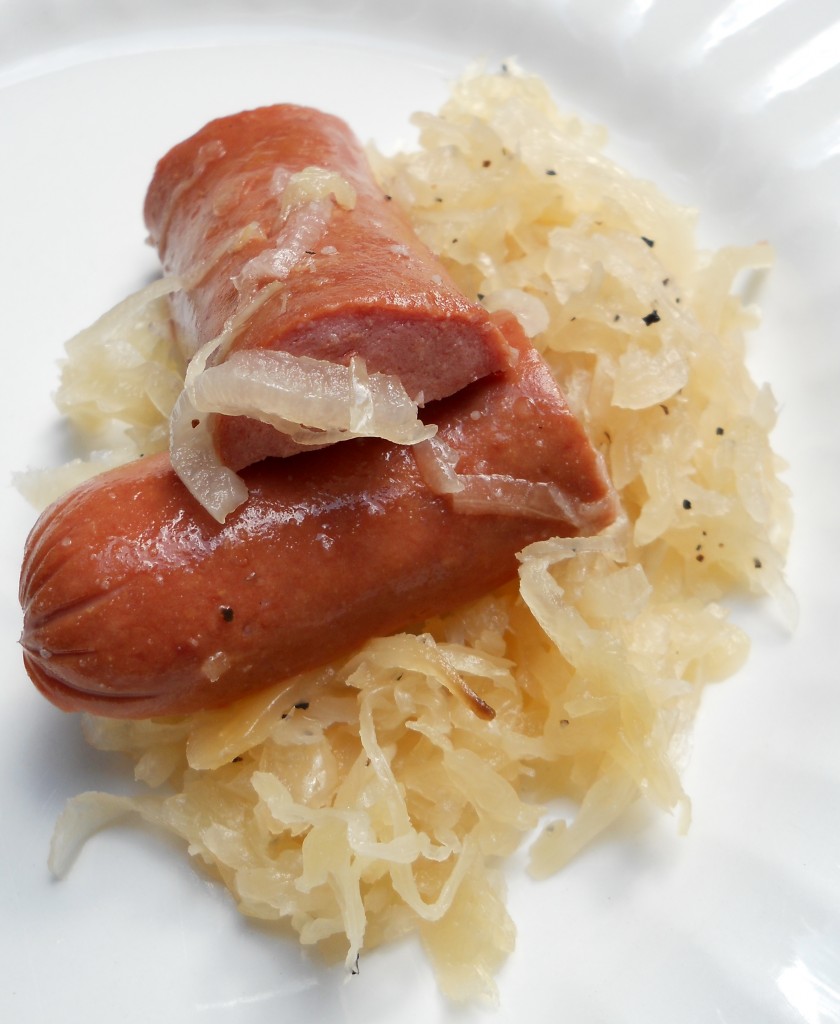
This is my contribution to Wanderfood Wednesday at Wanderlust and Lipstick. Stop by for more great recipes from around the world.
Easy Crockpot Sausage and Sauerkraut
(Serves 4)
Ingredients:
1 pound pre-cooked sausage (Kielbasa, bratwurst, etc), cut in 3-inch pieces
1-2 cans sauerkraut
1 onion, sliced thinly
1 tsp celery seed
ground pepper
Directions:
- In bottom of crockpot spread half the sauerkraut and top with 1/2 onion slices, 1/2 pound sausage, 1/2 tsp celery seed, and pepper.
- Repeat.
- Cover crockpot and cook on low for 4-5 hours.
- Serve with simple boiled, buttered potatoes sprinkled with parsley.

by Krista | Aug 31, 2010 | Gulliver Tuesday
I love breakfast in Paris, especially in the Autumn when leaves are skittering across the pavement and everyone is sporting elegant scarves and fabulous boots. I like sitting in a cafe or coffee shop by a large window, watching the world go by as I sip and nibble my way through breakfast.
Parisian food is justly famous for its quality, taste, diversity, and, alas, price. But there are ways to eat well in Paris without breaking the bank.
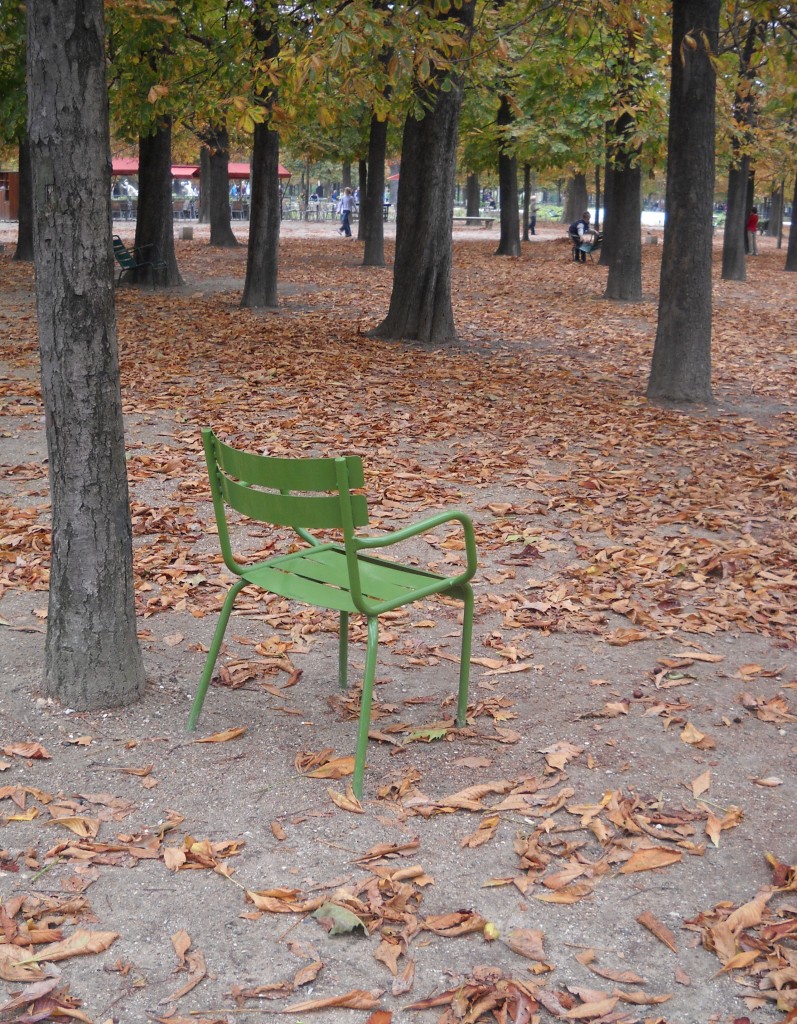
There is something comforting in a morning ritual of espresso and warm croissants, especially dark chocolate-filled ones. It’s even nicer when shared with a brother who happens to be living in Paris. Ryan had to work during the day, so we always made sure to get up early enough to have breakfast together before he dashed off to slave away and I meandered through the streets of Paris trying not to get too lost before meeting up with him for dinner.
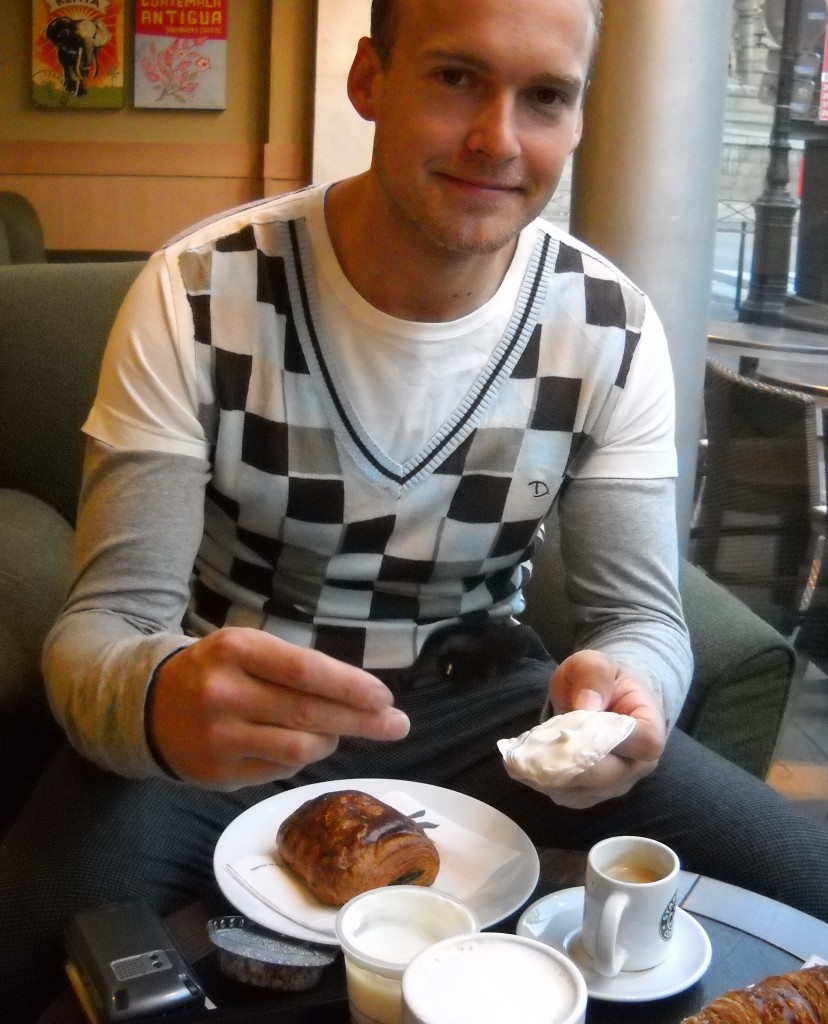
Here are my top three favorite Paris breakfasts, all for about $5 US.
Breakfast #1 – two warm croissants and an espresso. I like to eat one croissant with my coffee and save the other to nibble on whilst sitting on a park bench in a pretty park somewhere. Cost: Approximately 4 Euro/$5 US.
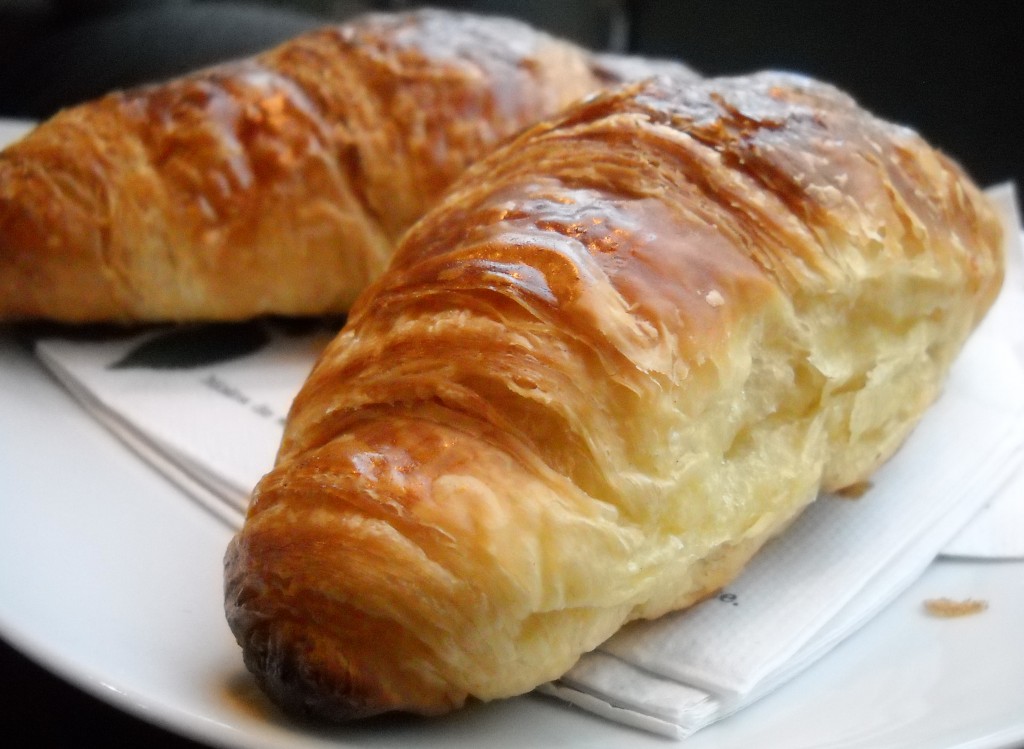
Breakfast #2 – quiche and real hot chocolate. I found a shop right across the square from where my brother was living run by a grouchy fellow who grudgingly gave me a smile when I beamed at him each morning. 🙂 It had wooden stools pulled up next to the window where I could people watch to my hearts content, and the best hot chocolate I’ve ever had in my life. Cost: Approximately 4.5o Euro/$5.50 US.
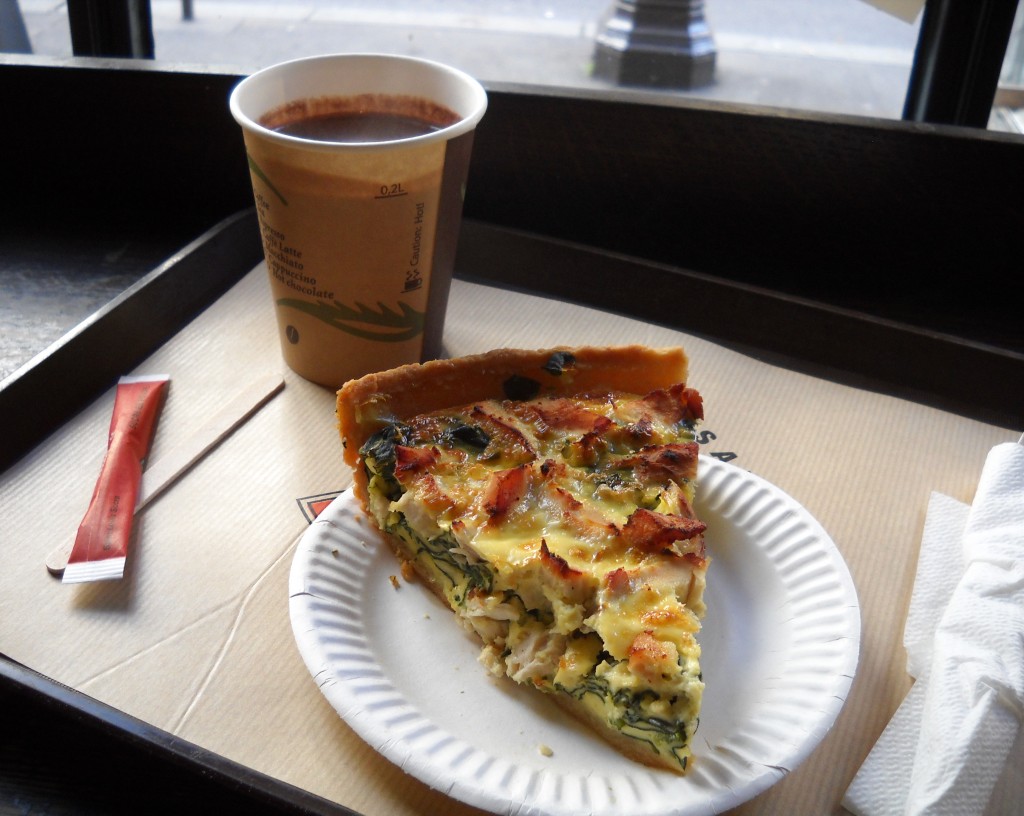
Breakfast #3: crepe filled with Nutella. I love the little crepe stands sprinkled throughout Paris. A bustling chap heating up crepes, slathering them with lavish amounts of Nutella and folding them just so for you to eat as you walk through the city. Bliss. Cost: Approximately 4-5 Euro/$5-6 US.
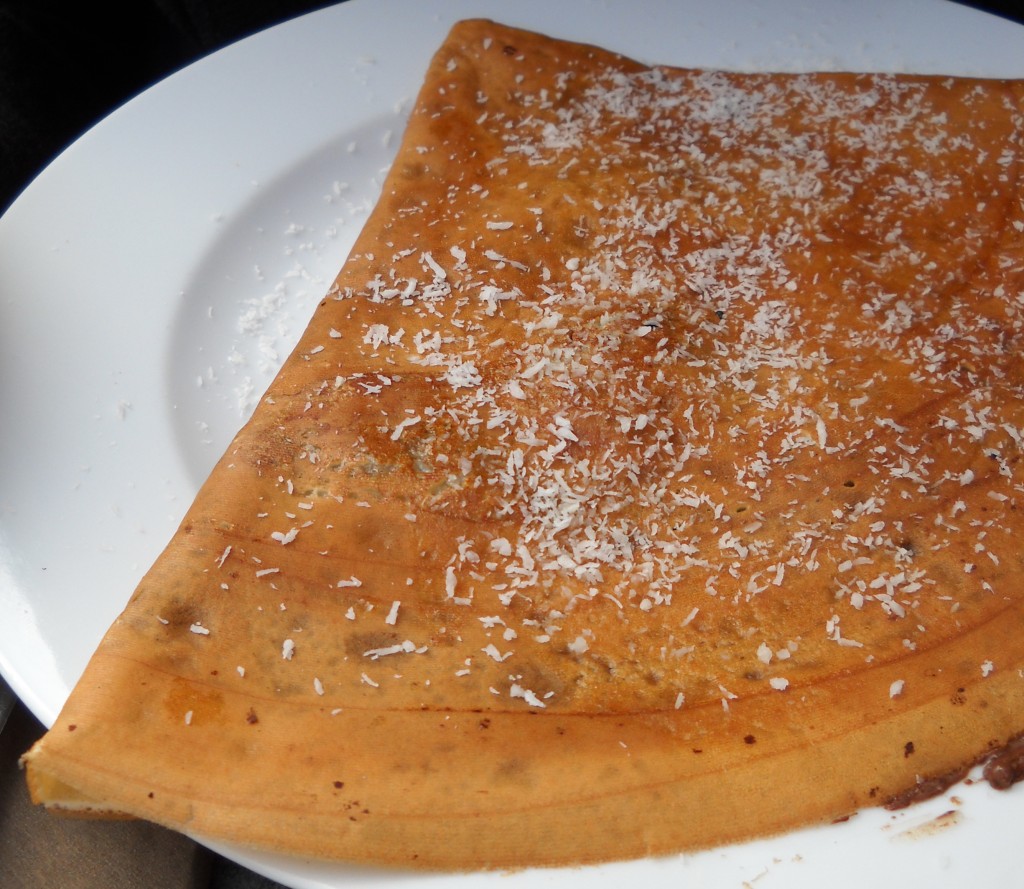
Which one is your favorite?
This is my contribution to Wanderfood Wednesday. Click here to discover more foods from around the world.

by Krista | Aug 24, 2010 | Gulliver Tuesday
For centuries Dubrovnik was an affluent and powerful place, her coffers filled with the wealth of her prosperous sea faring trade.
Alas, after the devastating earthquake of 1667, the mighty Republic of Dubrovnik began to decline.
1n 1669 it sold two patches of land to the Ottomans as insurance against advancing Venetian forces. Today those patches belong to Bosnia-Herzegovina and are the only points of contact that country has with the Adriatic.
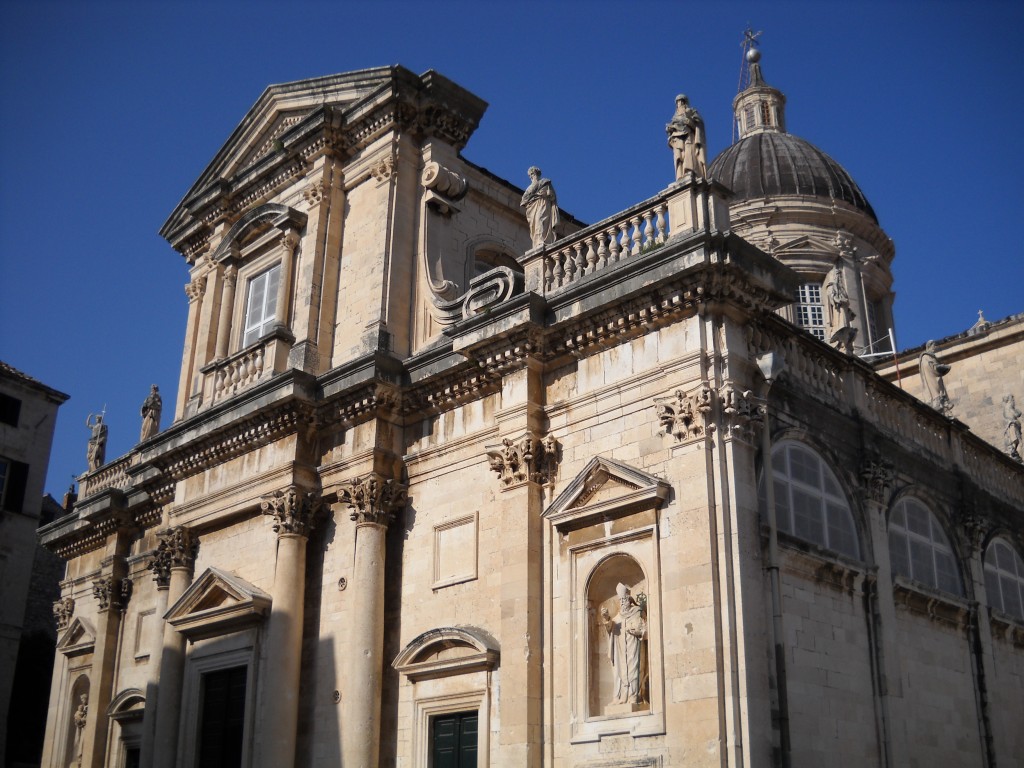
In the early 1800’s Russian-Montenegrin fleets besieged Dubrovnik, lobbing over 3000 cannonballs in the process. In 1806 Dubrovnik surrendered to Napoleon’s forces with the understanding that they simply needed free passage and weren’t interested in occupation. Sadly this was not the case. The French blockaded the harbor and soon Dubrovnik’s streets were filled with French soldiers.
On this day all flags and coats of arms above the city walls were painted black as a sign of mourning.
By 1808 the Republic was abolished, its land and people absorbed into Napoleon’s Kingdom of Italy.
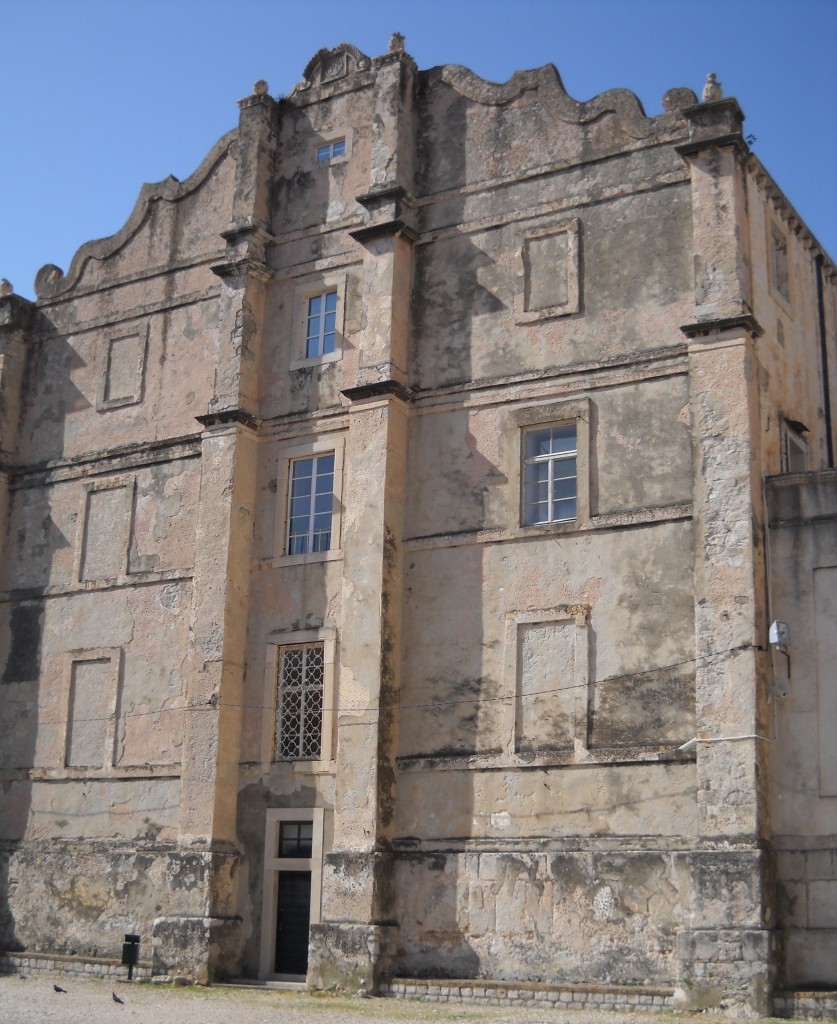
Thankfully that’s not the end of the story. Before too long a certain group of Austrians arrived on the scene and things really started to get interesting.
In the meantime, I’m digging into a fabulous Croatian salad from Sopovo. It is like a milder, spicier Greek salad with tomatoes, green pepper, hot peppers, and feta cheese. The white wine vinaigrette is savory and light and sets off the fresh vegetables beautifully.
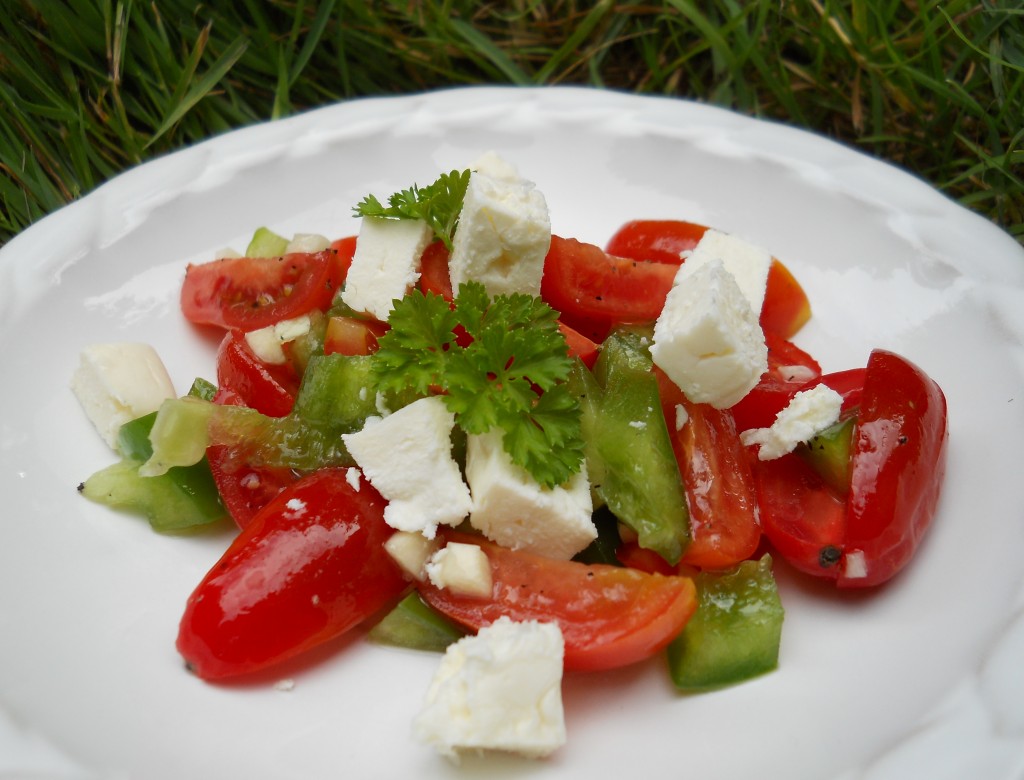
This is my contribution to Wanderfood Wednesday. Click here to see more dishes from around the world.
Sopovo Salad
Ingredients:
1 cup cherry or grape tomatoes, halved
1/2 Hot green pepper, minced
1/2 Green peppers, diced
2 Tbsp White wine vinegar
1 Garlic clove, minced
1 Tbsp Olive oil
1/4 tsp Salt
1/4 cup Feta, cubed
Parsley
Directions:
- Place tomatoes, peppers and green peppers in large bowl.
- In small bowl whisk together oil, vinegar, salt and garlic. Pour over vegetables and toss gently to coat.
- Top with feta and parsley.

by Krista | Jul 27, 2010 | Gulliver Tuesday
The sun was nearly set by the time we crossed the border from Bosnia into Croatia. The drive was gorgeous, wending high above the glistening sea, hazy islands in the distance.
We were delighted to see the Villa Doris tucked into a peaceful little cove, waves lapping quietly on the rocky shore as the last rosy rays of the sun lingered on the whitewashed walls.
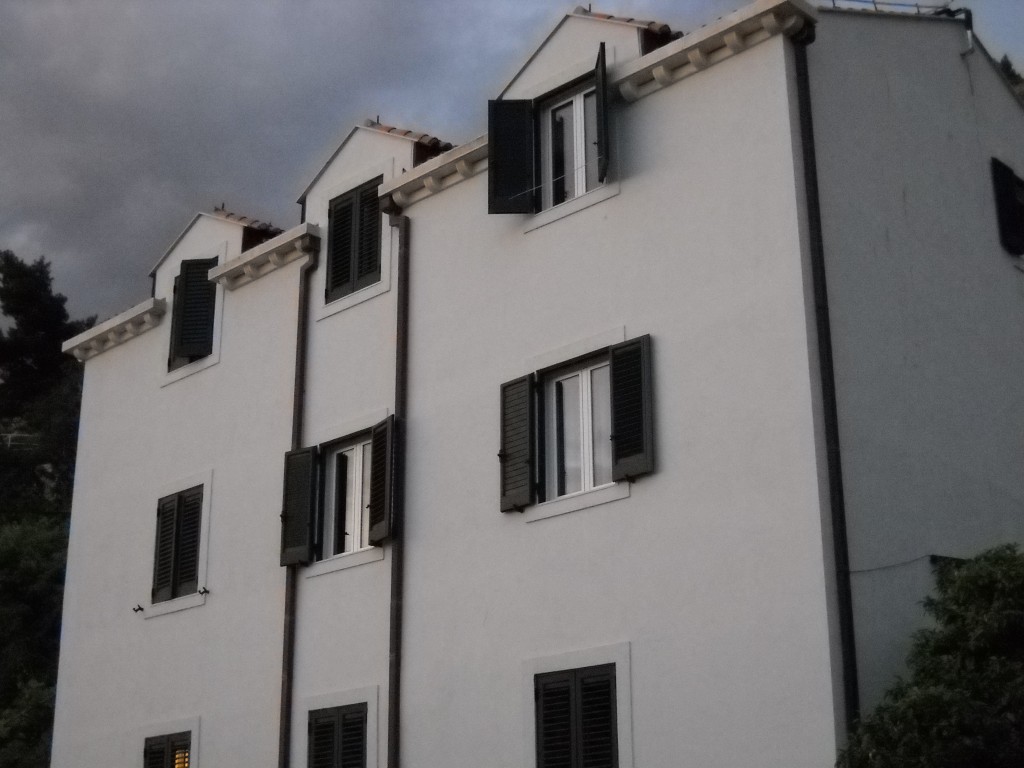
Our hostess was an amiable, trim little woman who welcomed us in, leading us through her terraced garden to our rooms overlooking vines, vegetables and fruit trees.
The balmy evening and cool sea were too great a temptation for the guys, and off they went for a late night swim in the bay of Stikovica.
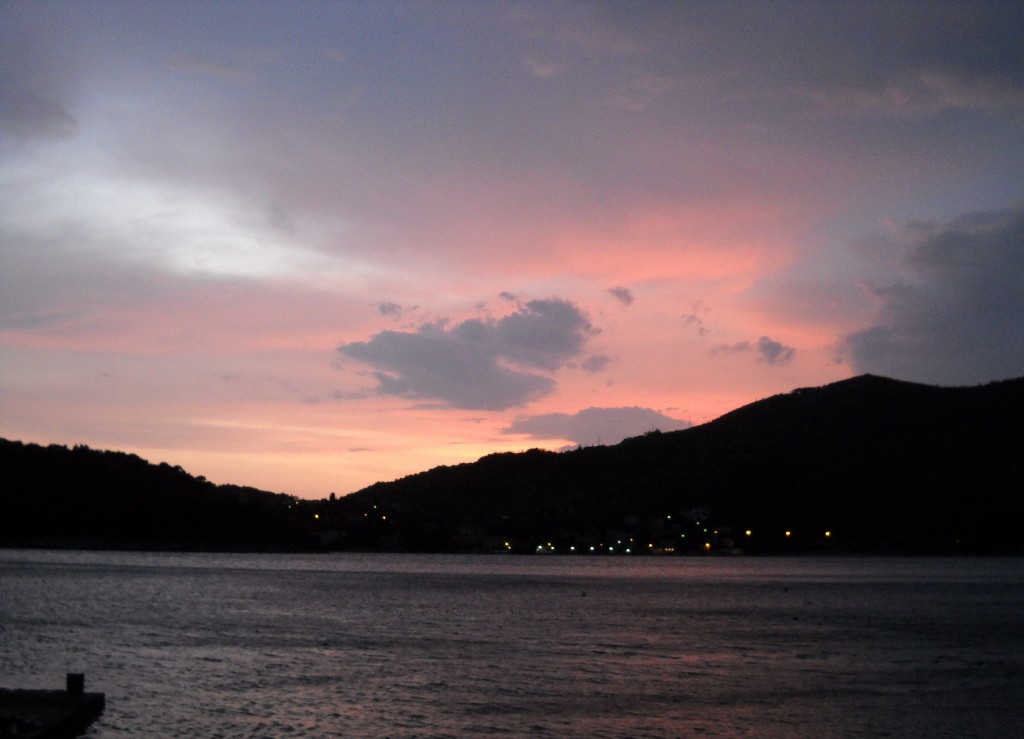
They hadn’t been gone long when there was a ruckus next door and I was called over to see my brother Ryan who had, and I quote, “gotten into battle with a sea urchin and lost.”
Poor guy stepped on one of those spiny critters with his bare foot then pulled it off with his bare hand ending up with palm and sole full of painful stingers that grew purple and angry looking. With very limited English our hostess explained there was nothing to be done except apply vodka and olive oil and wait for the spines to come out.
Ryan suggested that vodka taken internally might be even more effective.
The next few days we pampered the poor chap, applying oils and spirits, and I must say he was a trooper, soldiering on through treks and hikes though he must’ve been dyin.
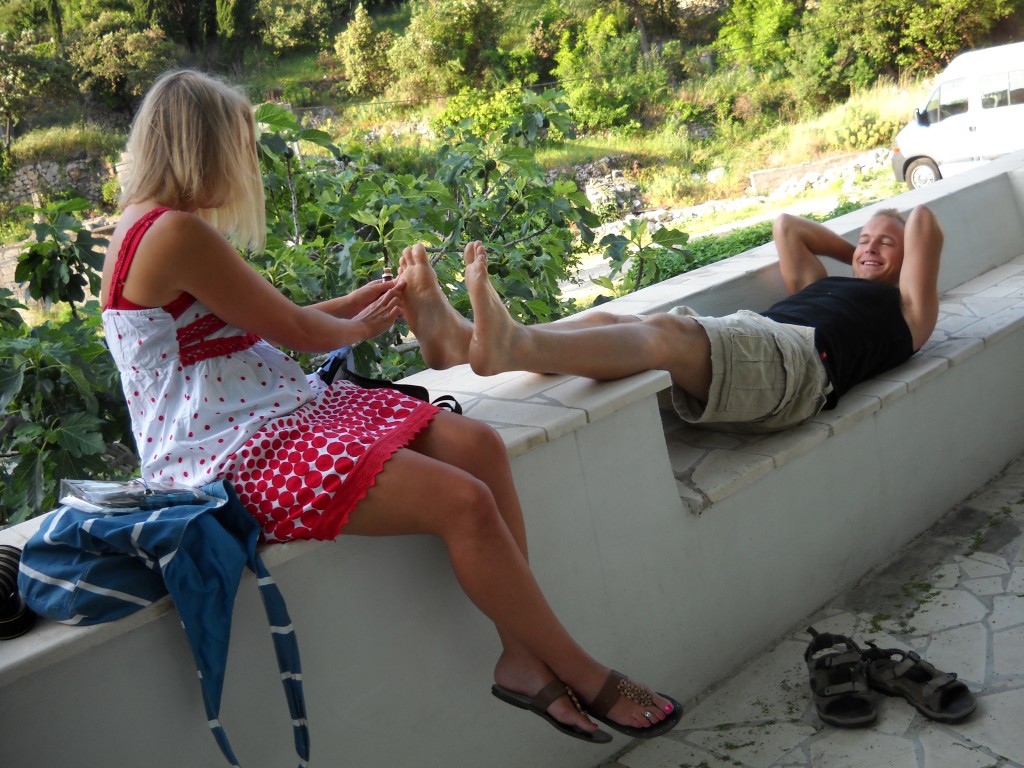
The surest way to cheer my brother up is to lead him to a bakery first thing in the morning. So we did just that. Glossy cases held tender croissants, hearty loaves of bread, and traditional desserts like Sour Cream Kifle – a tender crescent roll filled with sugared walnuts.

Before long Ry was back to his jolly self, exploring the sites and cursing all sea urchins. I love my brother!
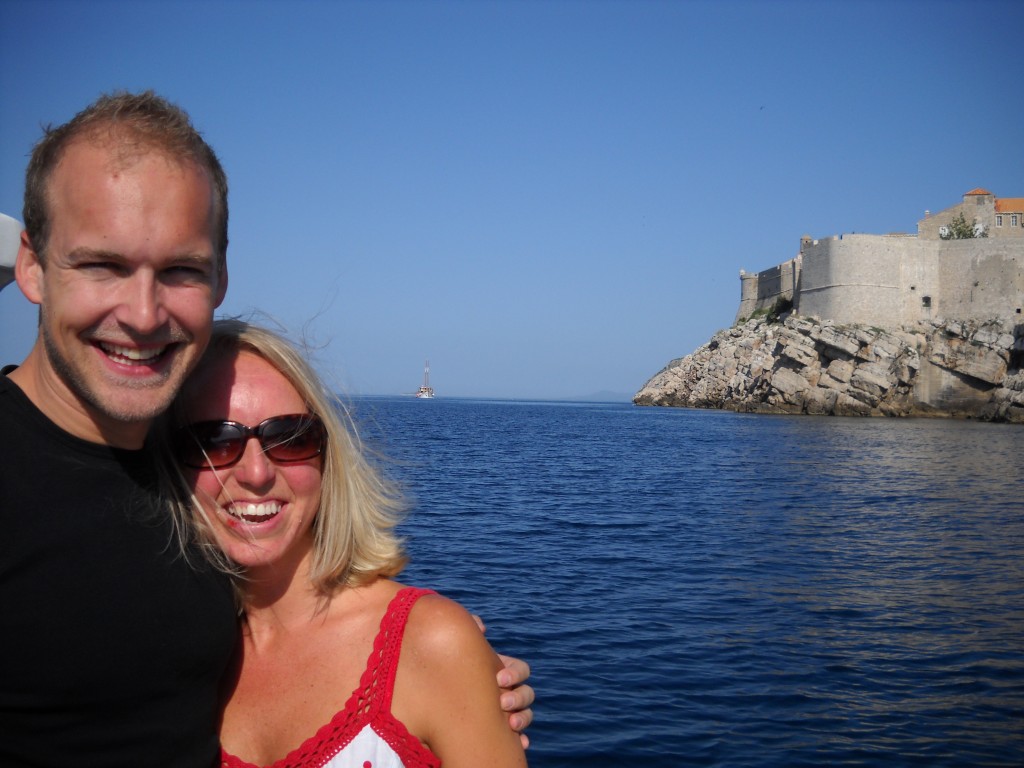
This is my contribution to Wanderfood Wednesday, hosted by Beth at Wanderlust and Lipstick.
Croatian Kifle
Ingredients:
1/3 cup sour cream
1 tablespoon water
1 envelope active dry yeast
1/2 cup butter, softened
2 1/4 cups flour
2 egg yolks
Melted butter or margarine
Powdered sugar
Nut Filling:
2 cups ground walnuts (I used pecans)
3/4 cup brown sugar
2 tsp vanilla
Directions:
- Heat sour cream and water until warm then add yeast and stir until dissolved.
- In mixing bowl blend butter and half cup flour, beat in sour cream until smooth. Add egg yolks and a quarter cup flour and beat until smooth, about 1 minute. Beat in remaining flour to make a soft dough.
- Knead dough on lightly floured surface about ten minutes.
- Divide dough in thirds, wrap tightly in plastic wrap and chill for 24 hours.
- Mix ground walnuts, brown sugar and vanilla until well incorporated. Set aside.
- Dust counter with powdered sugar and roll each piece of dough to a 10-inch circle.
- Spread one-third of nut mixture in center of circle to about 1 inch of the edge.
- Cut each circle into 8 pie-shaped wedges and roll each wedge from wide end to point, curving into a crescent shape.
- Place point-down on greased baking sheets. Brush with melted butter and bake at 375°F for 18 to 20 minutes or until golden brown.
- Cool and sprinkle with powdered sugar.

by Krista | Jul 6, 2010 | Gulliver Tuesday
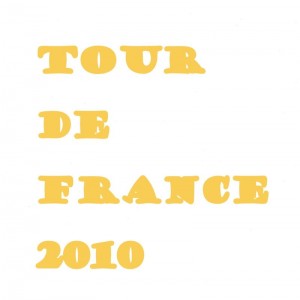 I was delighted when Barbara at Winos and Foodies invited me to participate in her culinary tour of the Tour de France, especially when I discovered my Stage 3 started in Belgium: Wanze-Arenberg Porte du Hainaut
I was delighted when Barbara at Winos and Foodies invited me to participate in her culinary tour of the Tour de France, especially when I discovered my Stage 3 started in Belgium: Wanze-Arenberg Porte du Hainaut
My first and only visit to Belgium was with my brother Ryan about ten years ago. He and I were on a road trip through Germany and decided that we were so close to Belgium we simply had to take a detour and visit.We drove through the Ardennes, stopping at Bastogne, Foy, and other places I knew from my years of reading World War II history. Then we drove north, parallel to the Wanze area.
It was like driving through a picture book of stone churches, country cottages and tidy farms. As we drove through the rolling hills and dense forests, we were mesmerized by the beauty of the Belgian countryside and kept stopping for photos, chocolate-filled croissants and strolls along cobbled streets.
I smile to think of the Tour De France cyclists pedaling madly through those places now, and wish I was with them only going much, much slower.
Wanze, which means marshland, is in the Meuse Valley built along the River Mehaigne.
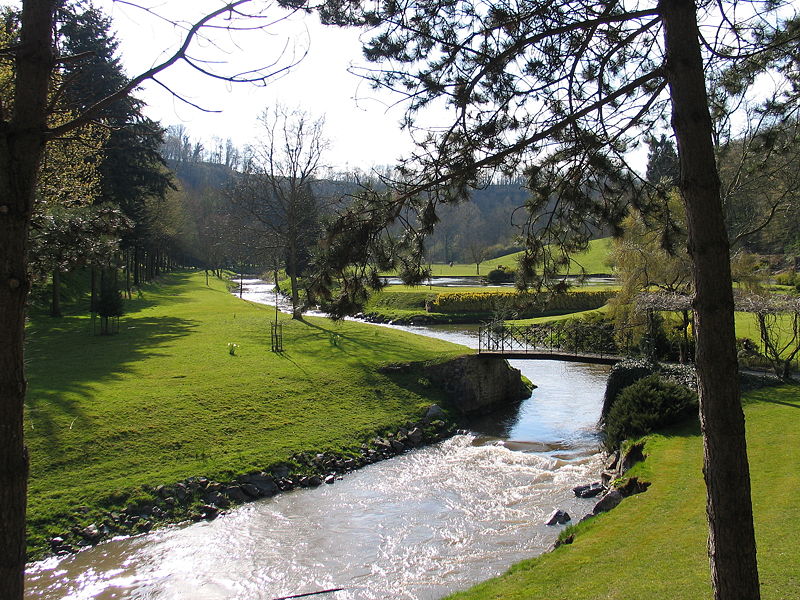 From Wikimedia
From Wikimedia
Wanze was first mentioned in 1127. Over the next several hundred years, it suffered through battles, sackings and burnings as the gentry tussled over rights of ownership and power. By the 1800’s things had settled down and in 1812 Belgium’s first sugar mill was installed. (See below) By the end of the century it was the largest in Europe, attracting immigrant workers from all over. Nowadays Wanze is home to BioWanze, the most innovating sugar refinery on the Continent.
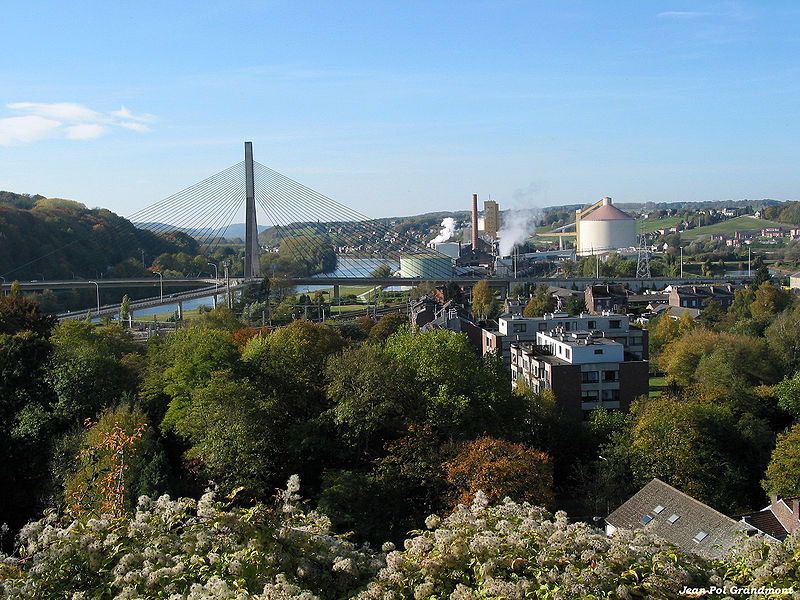 From Wikimedia
From Wikimedia
Wanze is remaking itself as an eco-tourism destination with walking trails that wend their way to the ruins of an ancient castle and a Cycle Museum that features 160 bicycles from as far back as 1830.
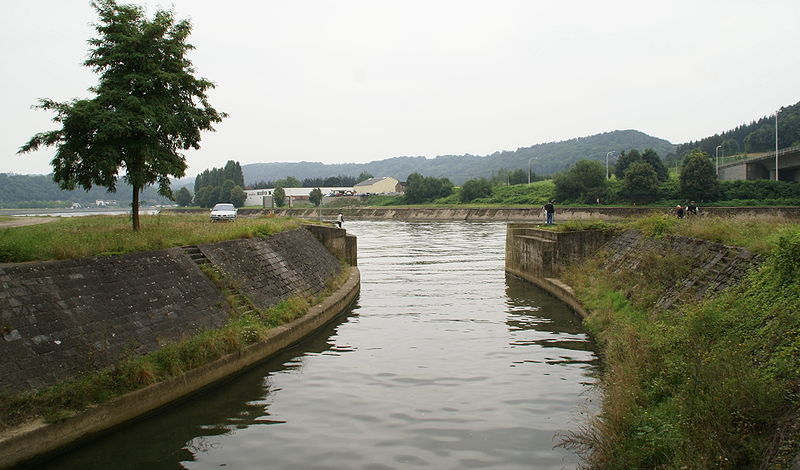 From Wikimedia
From Wikimedia
When I think of Belgian food I think of two things: pomme frites (French fries) and endive.
French Fries actually originated in Belgium. A Belgian journalist noted in 1680 that country people in the Meuse Valley were making these fried potatoes. Allegedly they used to serve tiny fried fish with their meals, but when the river froze they substituted fried potatoes.
Belgian pomme frites are made especially crispy and delicious by double-frying. The first dunking ensures the potatoes are cooked. After they are salted and cooled, the frites are returned to the hot oil and fried one minute longer to brown and crisp. Although Americans traditionally dip them in ketchup and my Canadian countrymen douse them in gravy, Belgians dip them in mayonnaise. A decadent topping to be sure.
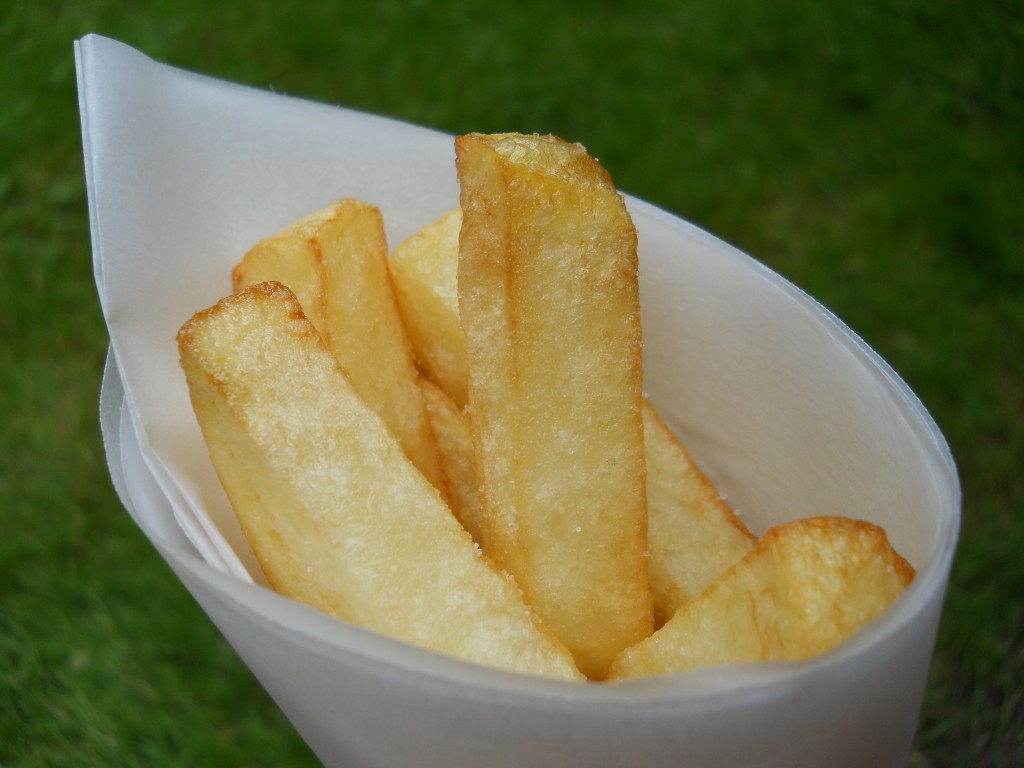
I had never cooked endive before conducting research for this post, and was delighted to find them in the specialty food section of the local grocery store.
One of the most popular Belgian endive dishes is a gratin.
I gently boiled the endive in salted water until tender, then let them drain and cool slightly. While they cooled I made a simple bechamel sauce with nutmeg and stirred in a small mountain of Swiss cheese. I wrapped the endive in thinly sliced ham, then nestled them into a buttered baking dish. I poured the sauce over and baked it for 20 minutes until heated through and bubbling. Pulling it out I topped it with more Swiss cheese and set it under the broiler until the cheese was browned beautifully.
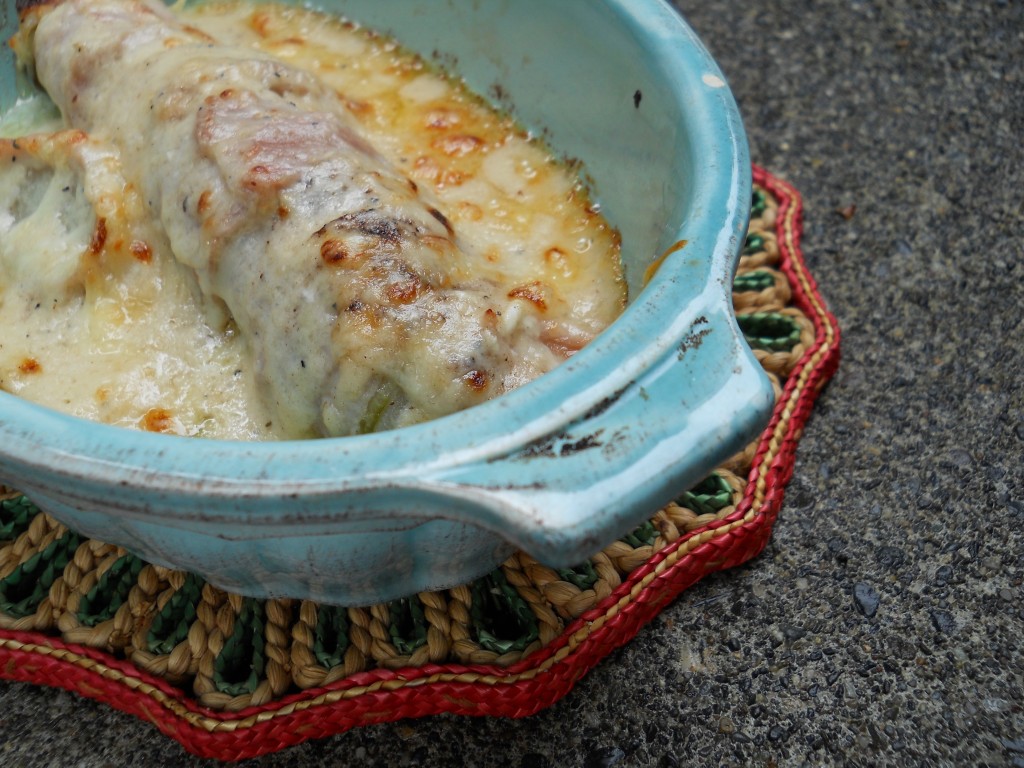
I am now a huge fan of endive (or is it the cheese??). I was going to save it to use for my lunches this week, but it was so delicious I only have enough left over for one more meal.
Pop over to the other blogs featuring each stage of the Tour de France:
Stage Two: My Kitchen Treasures: Brussels – Spa
Stage Four: Strayed from the Table: Cambrai-Reims
This is my contribution to Wanderfood Wednesday.
Belgian Pomme Frites
Ingredients:
3-4 potatoes, peeled, rinsed in salt water and patted dry
vegetable oil
salt
Directions:
- Heat oil in deep saucepan over medium-high heat about 5-7 minutes.
- Place dry potatoes in oil and let cook for 5-6 minutes. Remove with slotted spoon and let drain and cool on paper towels. Sprinkle with salt right away.
- When cool, return potatoes to hot oil and cook for 1-2 minutes more until they are golden brown. Remove with slotted spoon and let drain on paper towels. Salt again if necessary.
Belgian Endive Gratin
Ingredients:
6 endive, washed and outer leaves removed. Trim bottoms.
2 Tbsp butter
1 Tbsp flour
1 cup milk
1/8 tsp grated nutmeg
salt and pepper to taste
1 cup grated Swiss Cheese
6 slices prosciutto or other thinly sliced ham
1/2 cup grated Swiss Cheese
Directions:
- Preheat oven to 350 degrees F.
- Bring pot of salted water to boil and cook endive 8-10 minutes until tender. Remove to colander and drain.
- In saucepan melt butter over medium heat. Stir in flour and keep stirring until mixture browns. Add milk and stir until mixture thickens. Add nutmeg, pepper, salt and first measure of cheese.
- Wrap each endive in one slice prosciutto. Lay in buttered baking dish.
- Pour cheese sauce over endive. Place in oven and bake 20 minutes.
- Top with remaining measure of cheese. Place under broiler for 2-3 minutes or until cheese is golden brown. Serve immediately.

by Krista | Jun 22, 2010 | Gulliver Tuesday
On today’s post I am thrilled to bits to feature the exquisite photography of my friend, Rebekah Chapman. Her work is featured on her blog Mae Photo Design, and always makes me feel like I’ve stepped into a dream world that has frozen in time. A Southern girl at heart, Rebekah is a temporary transplant to Washington State and has captured its lush beauty in such a wonderful way. Join me on a delightful jaunt as we see Washington through her eyes.
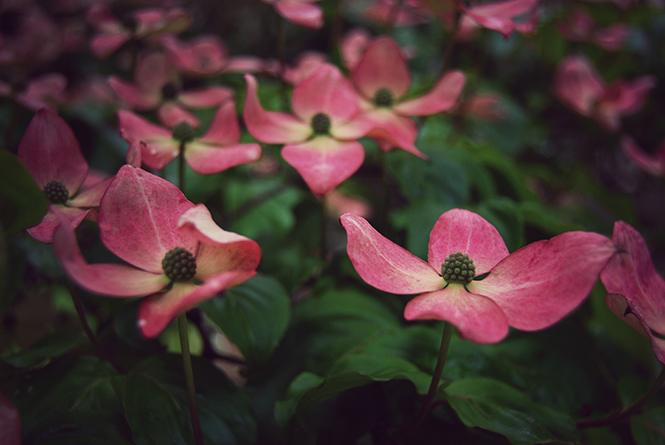

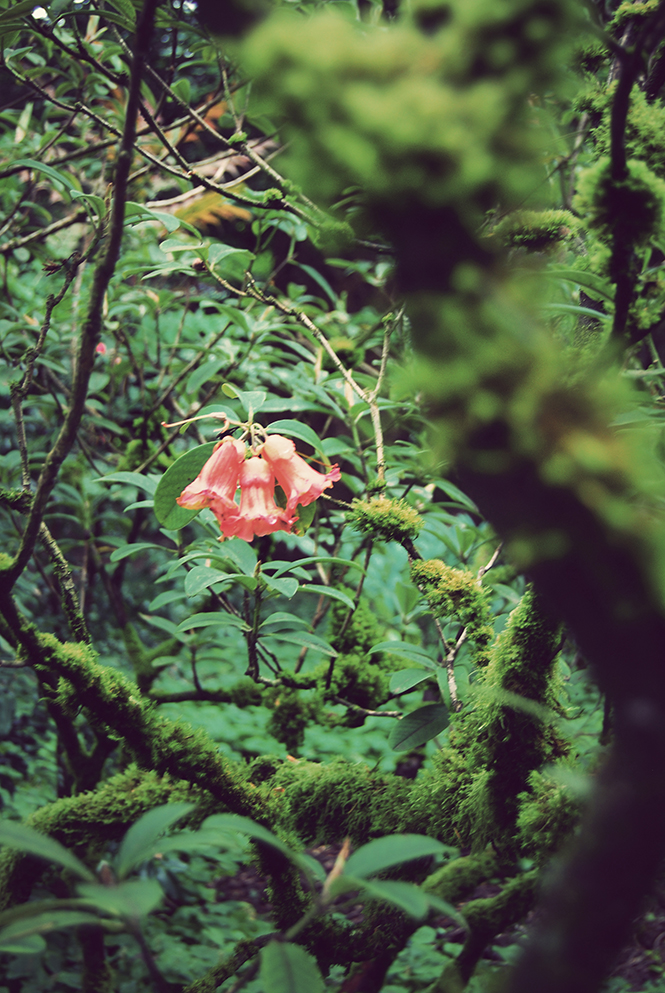
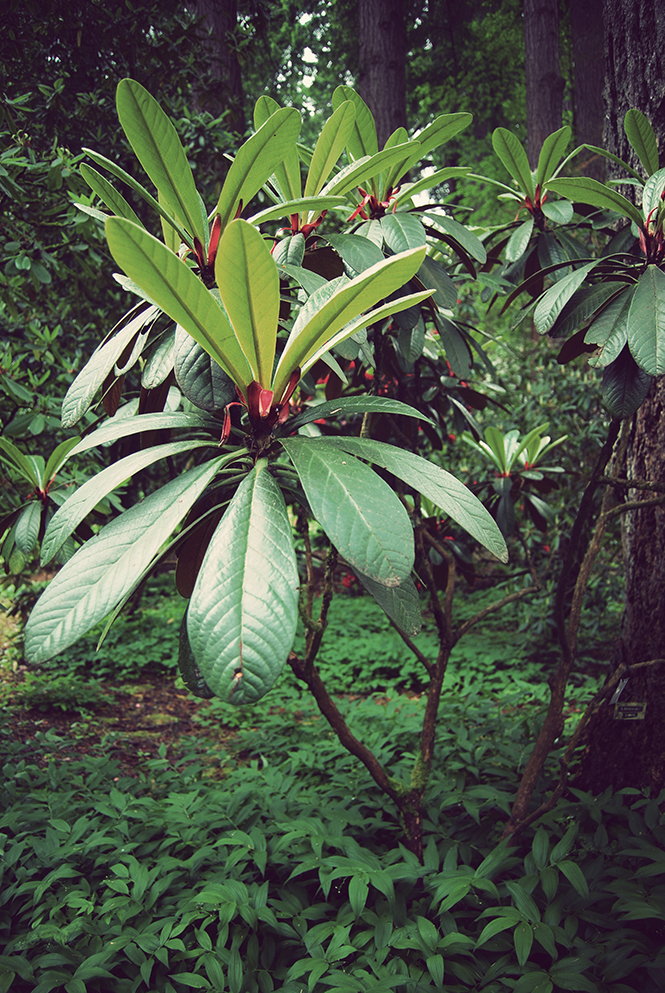
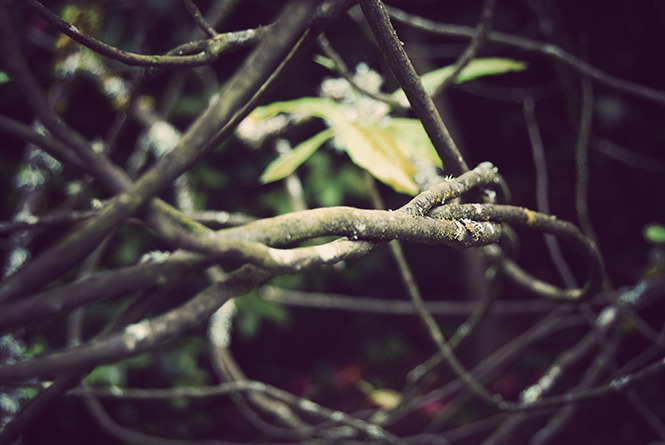


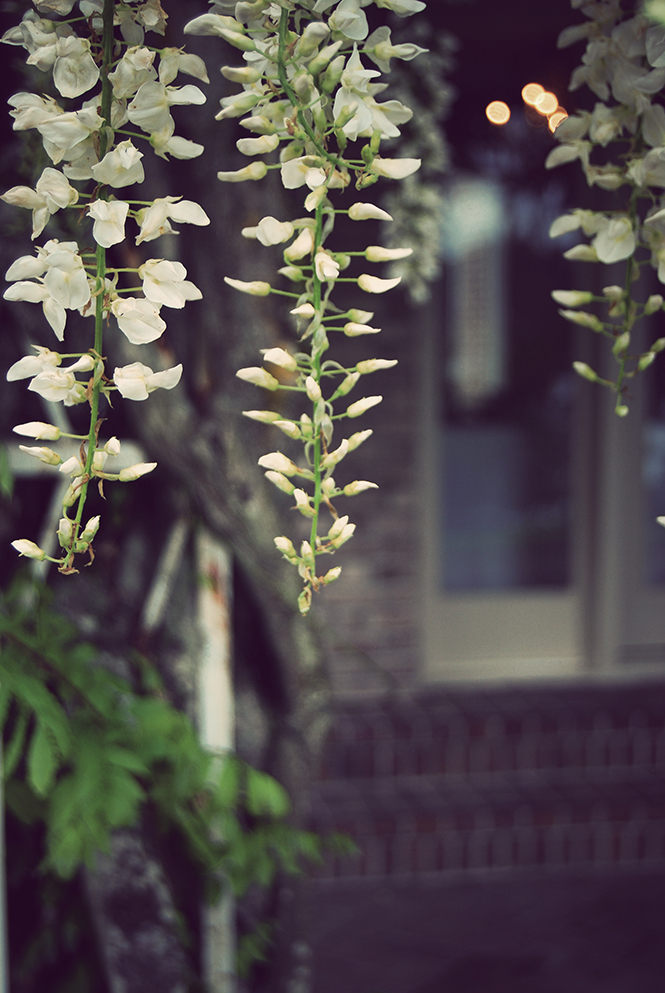
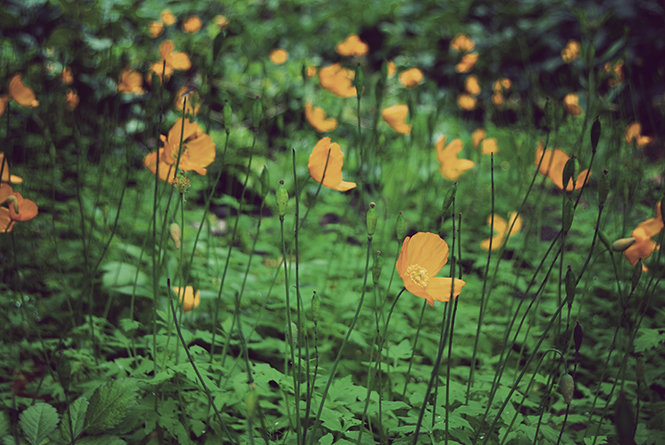
In celebration of Washington, I simply had to feature wild caught salmon. It is such a versatile fish and I have yet to discover a preparation I don’t like. Today I’m dining on one of my quickest, easiest versions: Pesto Salmon. Simply drizzle each fillet with lemon juice, sprinkle with salt, top with a liberal layer of pesto and bake for 10 minutes. Fast, delicious and healthy as can be. Do you like salmon? If yes, what is your favorite way to prepare it?
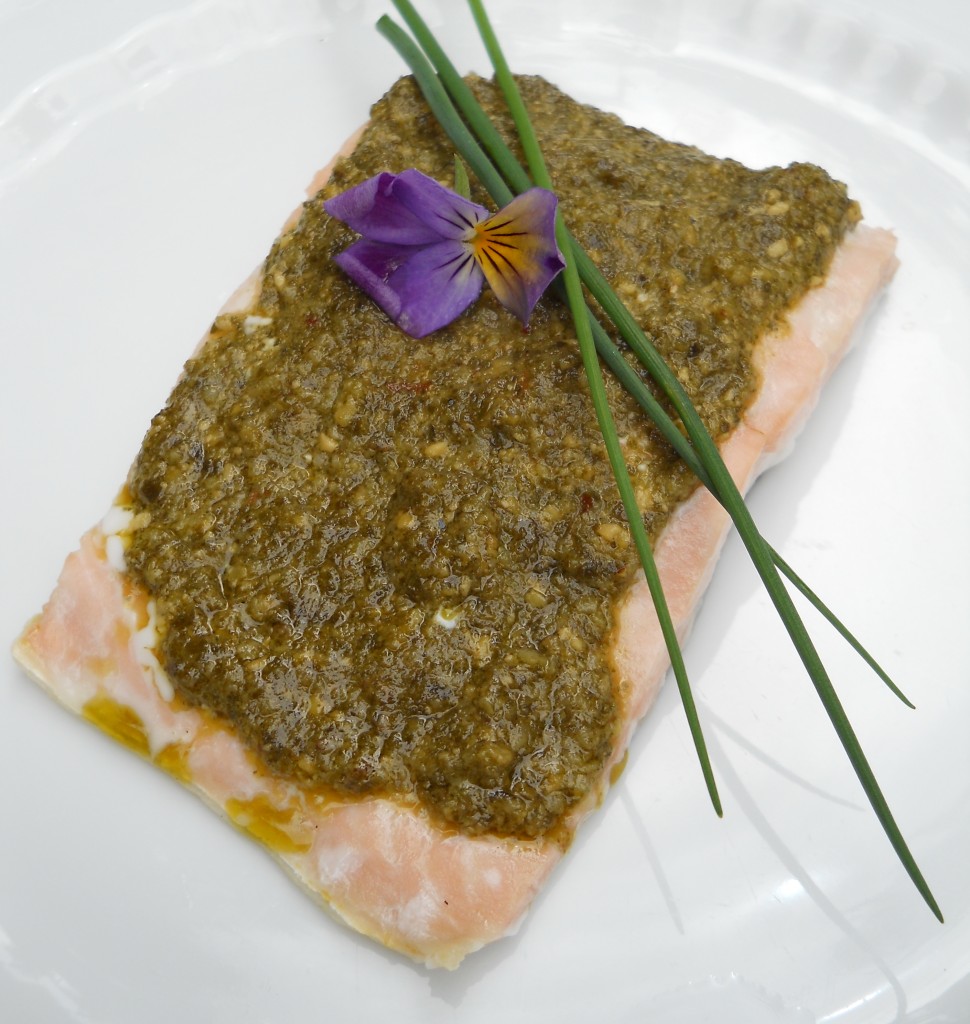
Pesto Salmon
Ingredients:
Salmon fillets
2 Tbsp pesto per fillet
1 lemon, quartered
Salt
Directions:
- Preheat oven to 400 degrees F.
- Place fillets in baking dish. Squeeze lemon liberally over each fillet and dust with salt.
- Spread 2 Tbsp pesto thickly over each fillet.
- Bake for 10 minutes and serve.























 I was delighted when Barbara at
I was delighted when Barbara at  From
From  From
From  From
From 











